Michael Craig-Martin on Albers, America, and architecture as entertainment
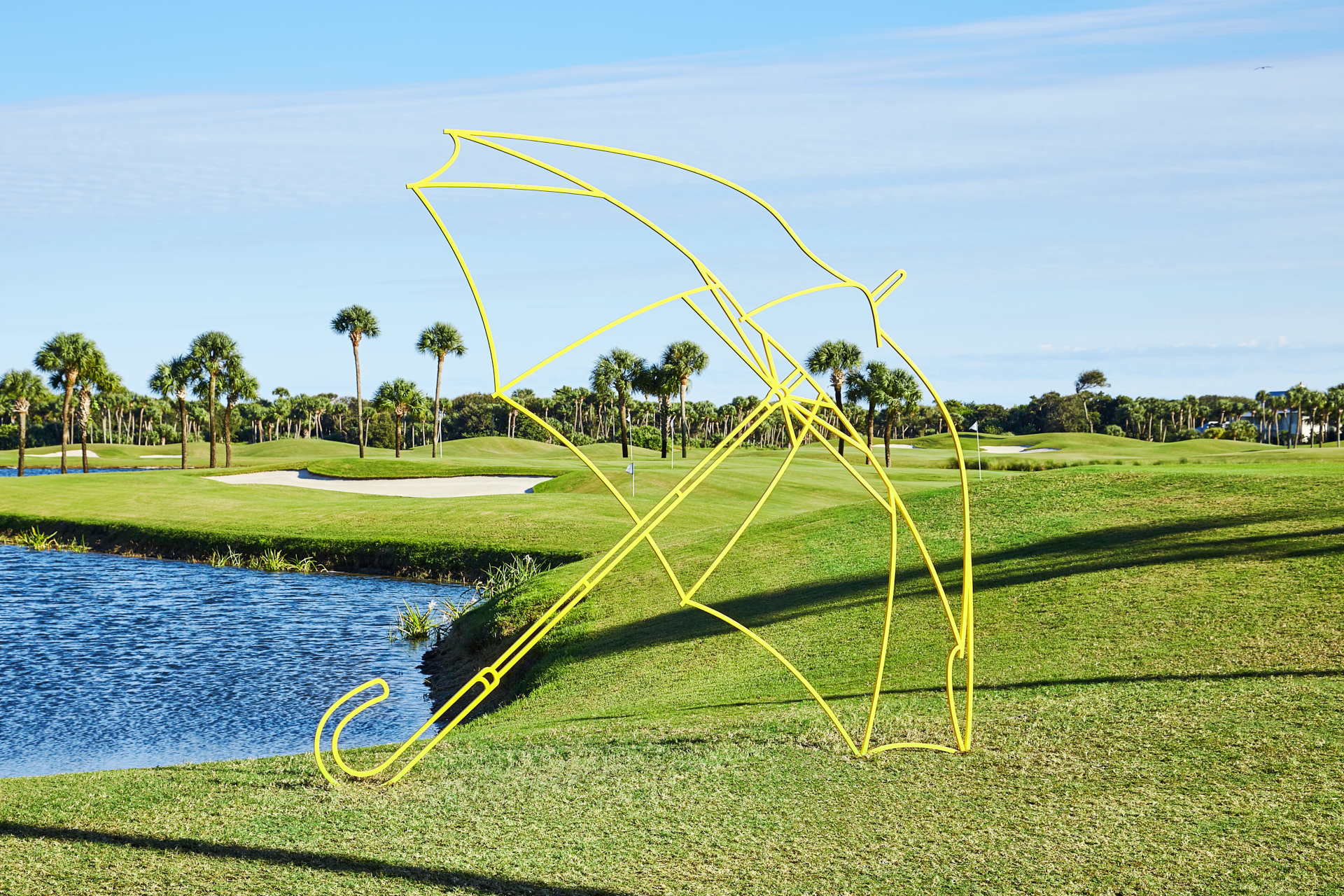
Somewhere in a maze of picket fences, golf greens and lakes, Vero Beach’s The Gallery at Windsor is a remote haven for British art world patricians. Its currently two years into a partnership with London’s Royal Academy of Arts, which annually brings a celebrated artist to the Atlantic coastline to exhibit. Last year, we observed with interest as Grayson Perry brought his flambouyantly British work to the palatial private community, to the visible delight of its residents. Now it's the turn of Irish artist Michael Craig-Martin, who saw an equally warm welcome (unseasonably chilly Floridian February withstanding).
Despite his connections with the US – Craig-Martin spent much of his childhood in Washington DC, and studied at Yale in the 1960s (more of which later) – he has exhibited relatively narrowly across America. Most recently, his work was included in group exhibitions in New York and Dallas in 2015; but as his stateside exhibitions go, ‘Present Sense’ is a vastly comprehensive one. In fact, it sees the artist’s sculpture, prints and paintings exhibited together for the first time anywhere, offering never-before-seen perspectives on the artist's unwavering approach to each discipline.
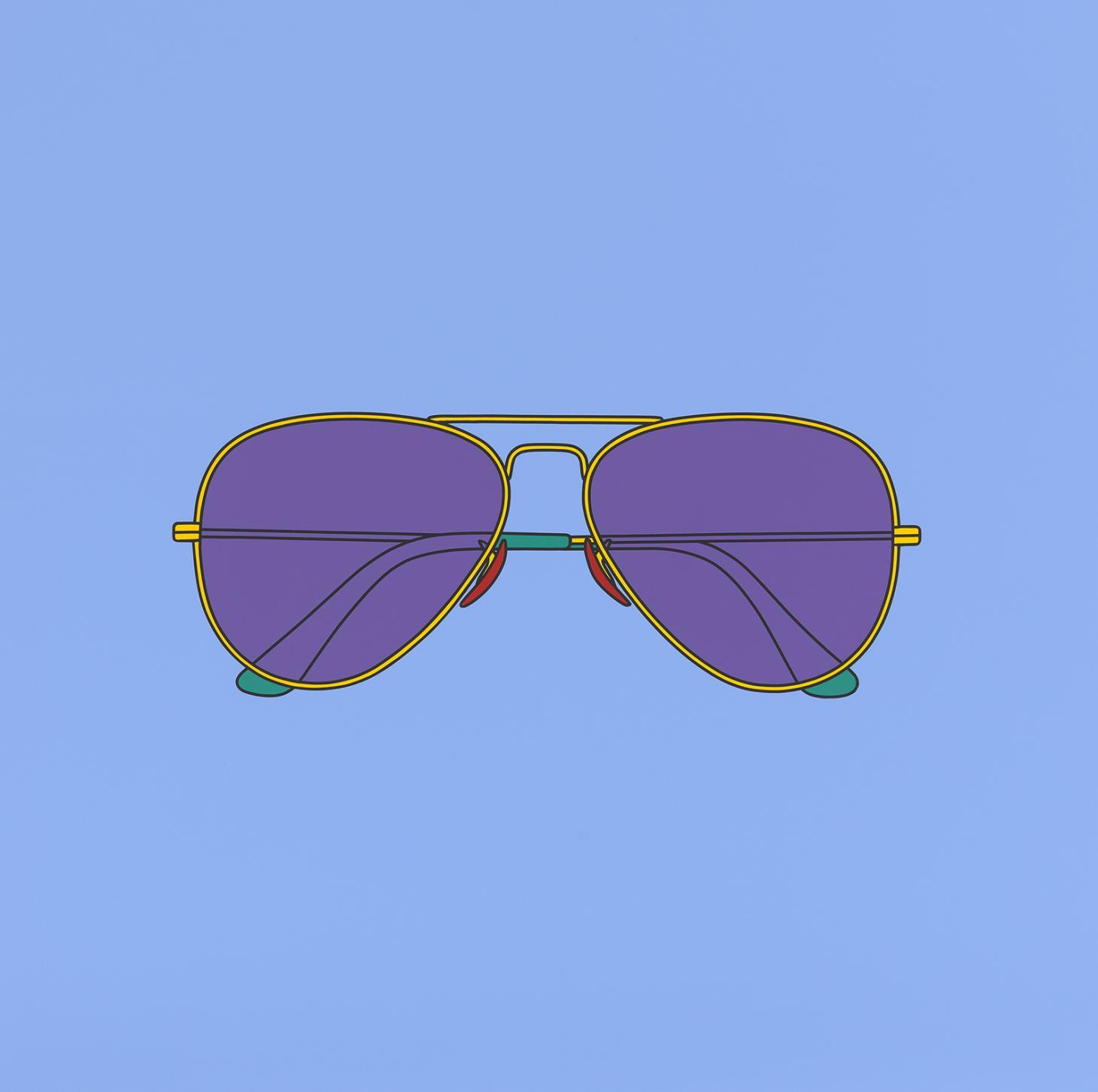
Untitled (sunglasses), 2018, by Michael Craig-Martin. © The artist.
Another first, ‘Present Sense’ marks Windsor’s inaugural en plain air display, with Craig-Martin’s sculptures positioned around the manicured grounds. In its 17-year history of hosting world-leading artists (Alex Katz, Peter Doig, Ed Ruscha, Alex Katz, and Jasper Johns to name a few) it’s surprising that the gallery's vacation-perfect surrounds haven’t been utilised more often.
The success of Craig-Martin’s sculptures in their picturesque settings might be set to change that (though one does worry they might get clobbered by a rogue golf buggy, or over-zealous swing). The paper-thin works, almost two-dimensional in profile, describe familiar objects with Craig Martin's known clarity. A pink stiletto punctures the turf between mansions; a red wheelbarrow frames the paddocks; two open umbrellas look like they’re about to lift off and bounce across the lake. Thanks to each sculpture’s near-transparency, the surroundings play a crucial role in the way they're seen, and Craig-Martin had ideas for their exact positioning long before they were finally placed. The over-sized white picket-fence, for example, sits at the entrance of the resort, between rows of actual picket-fences, which look comically small in comparison. A giant, magenta pitchfork pierces the ground near a flowerbed, as if God has been gardening.
RELATED STORY
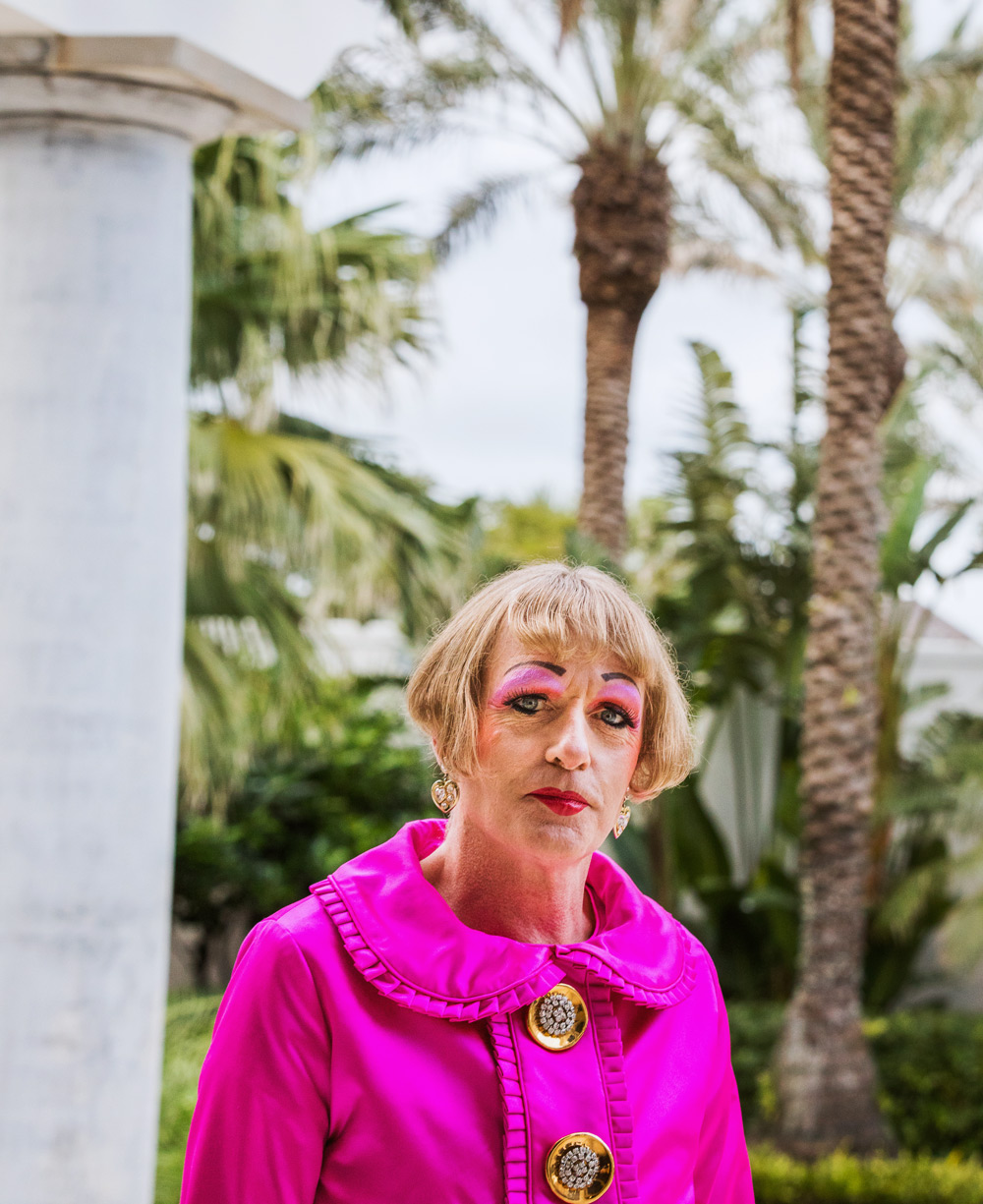
‘To be honest, I’d make all the sculptures twice as big if I could,’ Craig-Martin laughs. ‘Scale produces wonderment. Everyone is touched by something that makes them feel childlike.’ As such, humour plays an important role, too. ‘When work includes veiled illusions to humour, you can seduce people to engaging with it, without them really realising.’
‘Architecture is like going to the movies, it's like entertainment – a pure pleasure’
This is not to say Craig-Martin's work is not underpinned by great theoretical seriousness, much of it learnt from his transformative time as an undergraduate. ‘I was very innocent and green when I arrived at Yale in 1961,’ he explains. ‘There were so few undergraduates doing fine art at the time, that there was no real program – they just put us in with the graduate students. Josef Albers had been teaching for three or four years. I was in the same class as Richard Serra. At the time, I thought that was normal. Only later on did I learn it was remarkable.’
Through these notable alumni, Craig-Martin attended the pioneering exhibitions of the day, learning ‘from minimalists, colour theorists, and pop artists like Andy [Warhol] firsthand.’ Each early inspiration still sings through his work today, through the reduced quality of minimalism, Albers-inspired emphasis on colour interactions, and the depiction of everyday objects favoured by pop artists.
Craig-Martin’s work is also informed by his lifelong interest in architecture and design, and colourful prints of buildings by Mies van der Rohe and Le Corbusier feature here. But – despite his sculpture’s architecture-like structural complexity – trying his hand at designing a building doesn't interest him remotely. ‘For me, architecture is like going to the movies, it’s like entertainment. A pure pleasure.’ The disciplines occupy different headspaces. ‘Many people think creativity is to do with invention. I think there’s different kinds of creativity. Invention is the role of designers. Artists observe.’
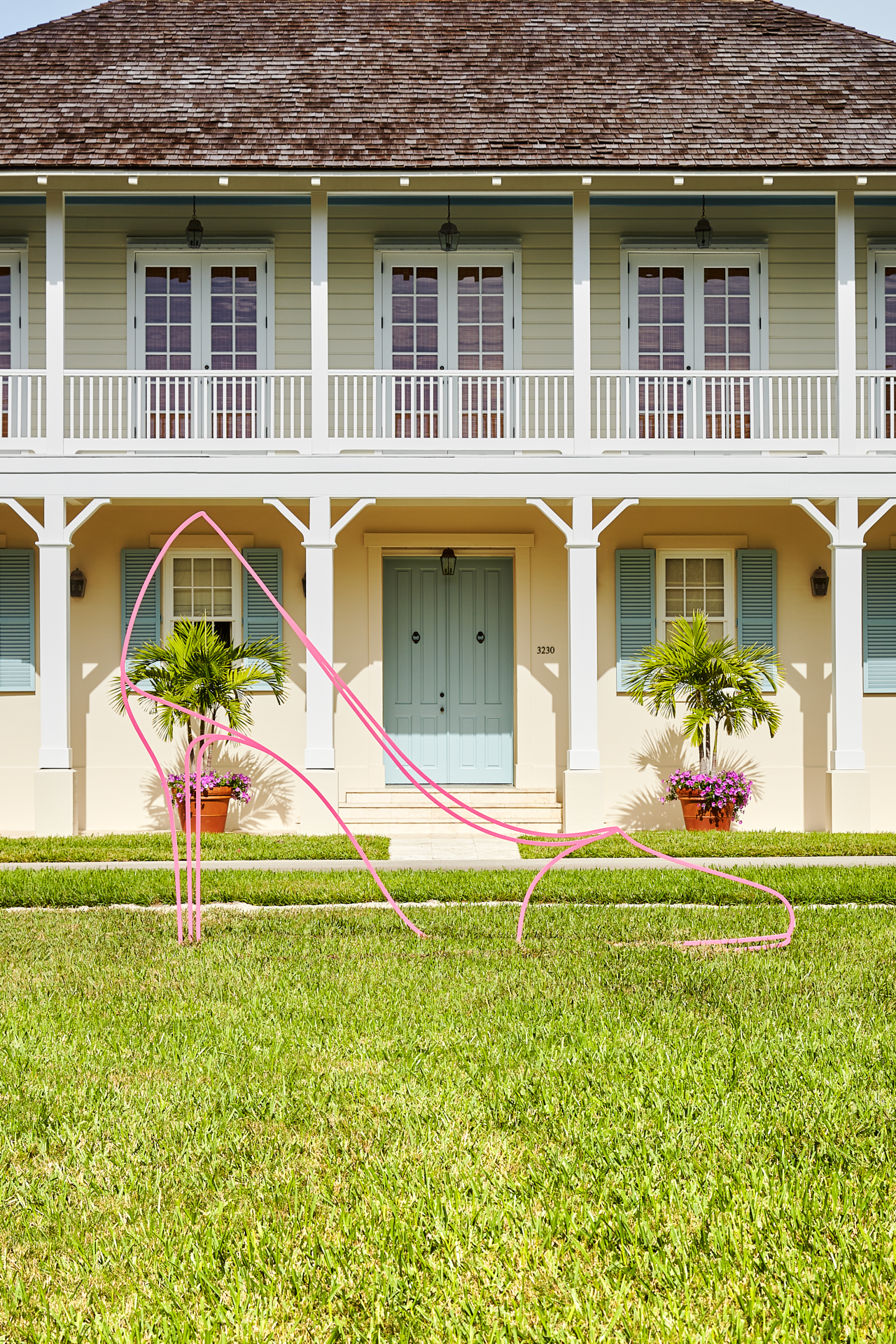
High Heel (pink), 2013, by Michael Craig-Martin. © The artist. Courtesy of the artist and Gagosian.
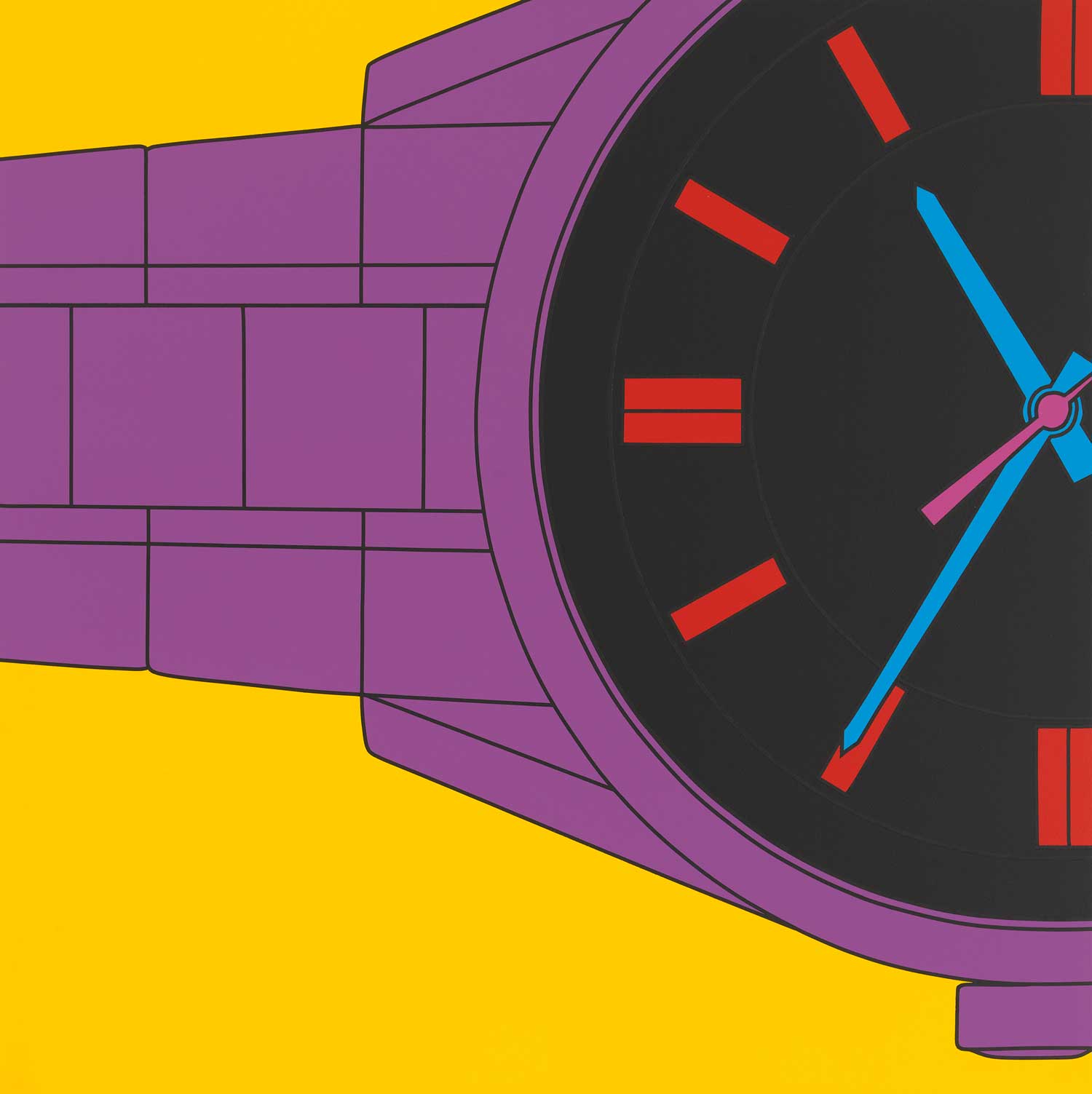
Untitled (watch fragment yellow), 2018, by Michael Craig-Martin. © The artist.
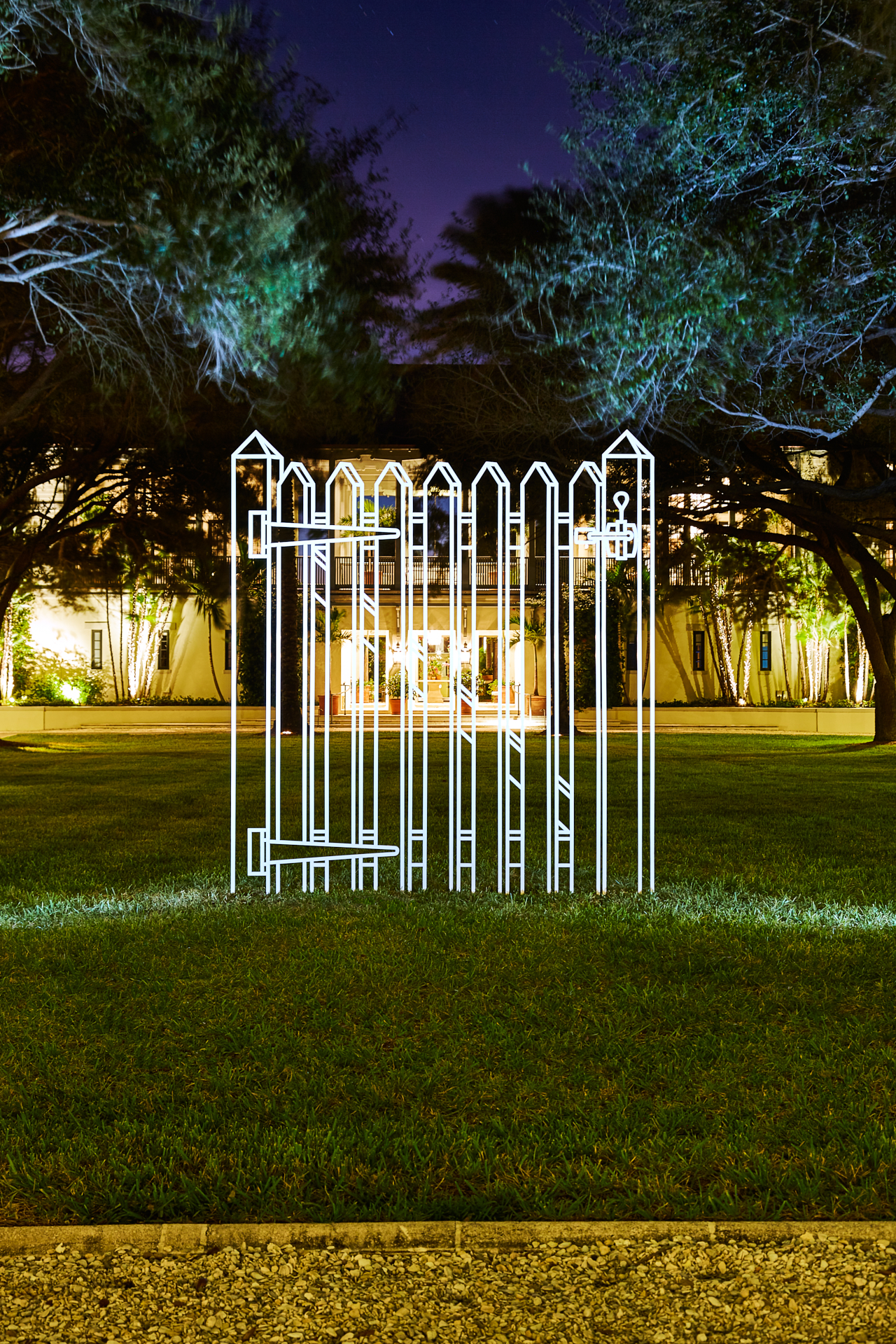
Gate (white), 2011, by Michael Craig-Martin. © The artist.
INFORMATION
‘Present Sense’ is on view until 25 April. For more information, visit the Windsor website
ADDRESS
Wallpaper* Newsletter
Receive our daily digest of inspiration, escapism and design stories from around the world direct to your inbox.
The Gallery at Windsor
3125 Windsor Boulevard
Vero Beach
Elly Parsons is the Digital Editor of Wallpaper*, where she oversees Wallpaper.com and its social platforms. She has been with the brand since 2015 in various roles, spending time as digital writer – specialising in art, technology and contemporary culture – and as deputy digital editor. She was shortlisted for a PPA Award in 2017, has written extensively for many publications, and has contributed to three books. She is a guest lecturer in digital journalism at Goldsmiths University, London, where she also holds a masters degree in creative writing. Now, her main areas of expertise include content strategy, audience engagement, and social media.
-
 All-In is the Paris-based label making full-force fashion for main character dressing
All-In is the Paris-based label making full-force fashion for main character dressingPart of our monthly Uprising series, Wallpaper* meets Benjamin Barron and Bror August Vestbø of All-In, the LVMH Prize-nominated label which bases its collections on a riotous cast of characters – real and imagined
By Orla Brennan
-
 Maserati joins forces with Giorgetti for a turbo-charged relationship
Maserati joins forces with Giorgetti for a turbo-charged relationshipAnnouncing their marriage during Milan Design Week, the brands unveiled a collection, a car and a long term commitment
By Hugo Macdonald
-
 Through an innovative new training program, Poltrona Frau aims to safeguard Italian craft
Through an innovative new training program, Poltrona Frau aims to safeguard Italian craftThe heritage furniture manufacturer is training a new generation of leather artisans
By Cristina Kiran Piotti
-
 The art of the textile label: how British mill-made cloth sold itself to Indian buyers
The art of the textile label: how British mill-made cloth sold itself to Indian buyersAn exhibition of Indo-British textile labels at the Museum of Art & Photography (MAP) in Bengaluru is a journey through colonial desire and the design of mass persuasion
By Aastha D
-
 From counter-culture to Northern Soul, these photos chart an intimate history of working-class Britain
From counter-culture to Northern Soul, these photos chart an intimate history of working-class Britain‘After the End of History: British Working Class Photography 1989 – 2024’ is at Edinburgh gallery Stills
By Tianna Williams
-
 Surrealism as feminist resistance: artists against fascism in Leeds
Surrealism as feminist resistance: artists against fascism in Leeds‘The Traumatic Surreal’ at the Henry Moore Institute, unpacks the generational trauma left by Nazism for postwar women
By Katie Tobin
-
 From activism and capitalism to club culture and subculture, a new exhibition offers a snapshot of 1980s Britain
From activism and capitalism to club culture and subculture, a new exhibition offers a snapshot of 1980s BritainThe turbulence of a colourful decade, as seen through the lens of a diverse community of photographers, collectives and publications, is on show at Tate Britain until May 2025
By Anne Soward
-
 Inside Jack Whitten’s contribution to American contemporary art
Inside Jack Whitten’s contribution to American contemporary artAs Jack Whitten exhibition ‘Speedchaser’ opens at Hauser & Wirth, London, and before a major retrospective at MoMA opens next year, we explore the American artist's impact
By Finn Blythe
-
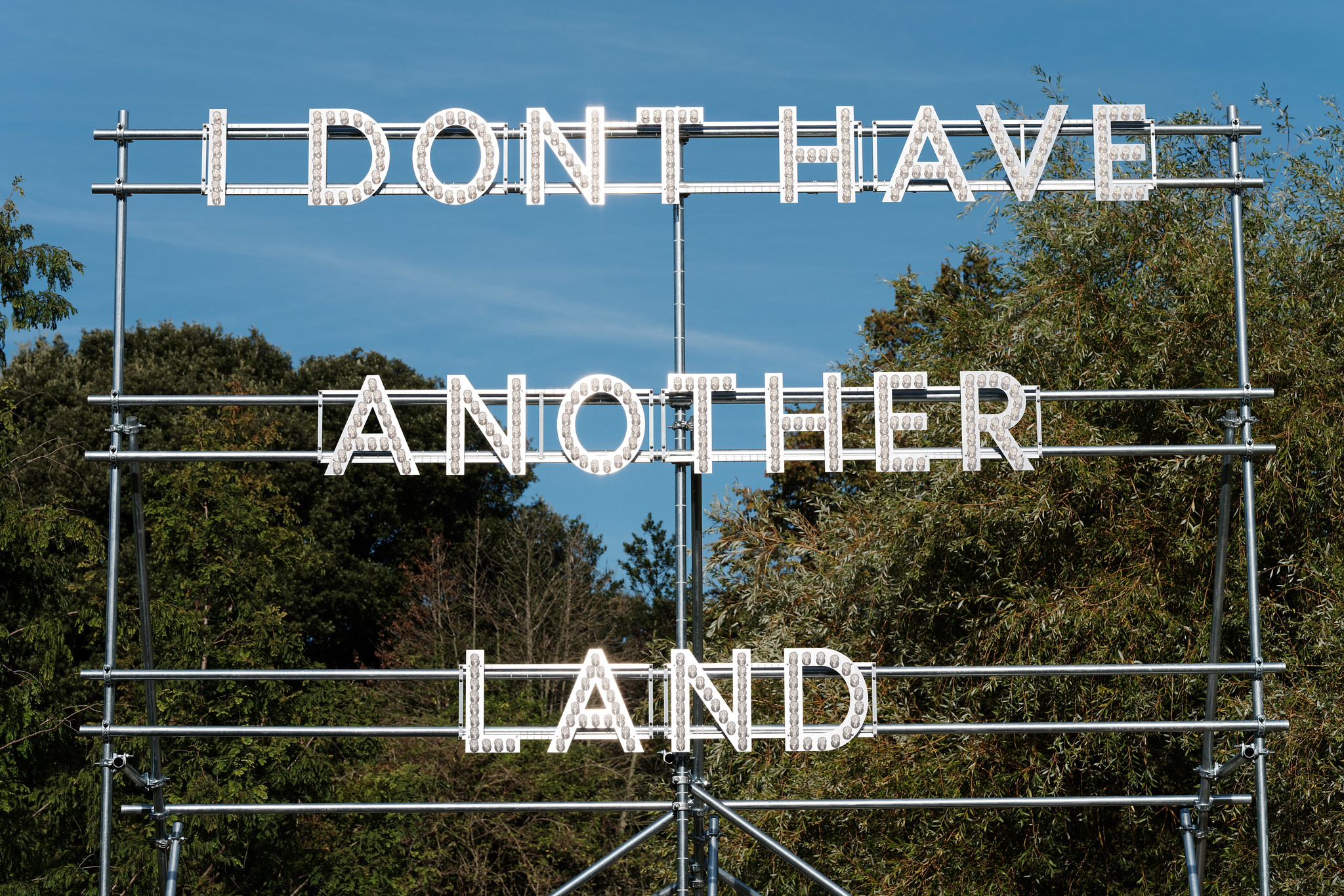 Frieze Sculpture takes over Regent’s Park
Frieze Sculpture takes over Regent’s ParkTwenty-two international artists turn the English gardens into a dream-like landscape and remind us of our inextricable connection to the natural world
By Smilian Cibic
-
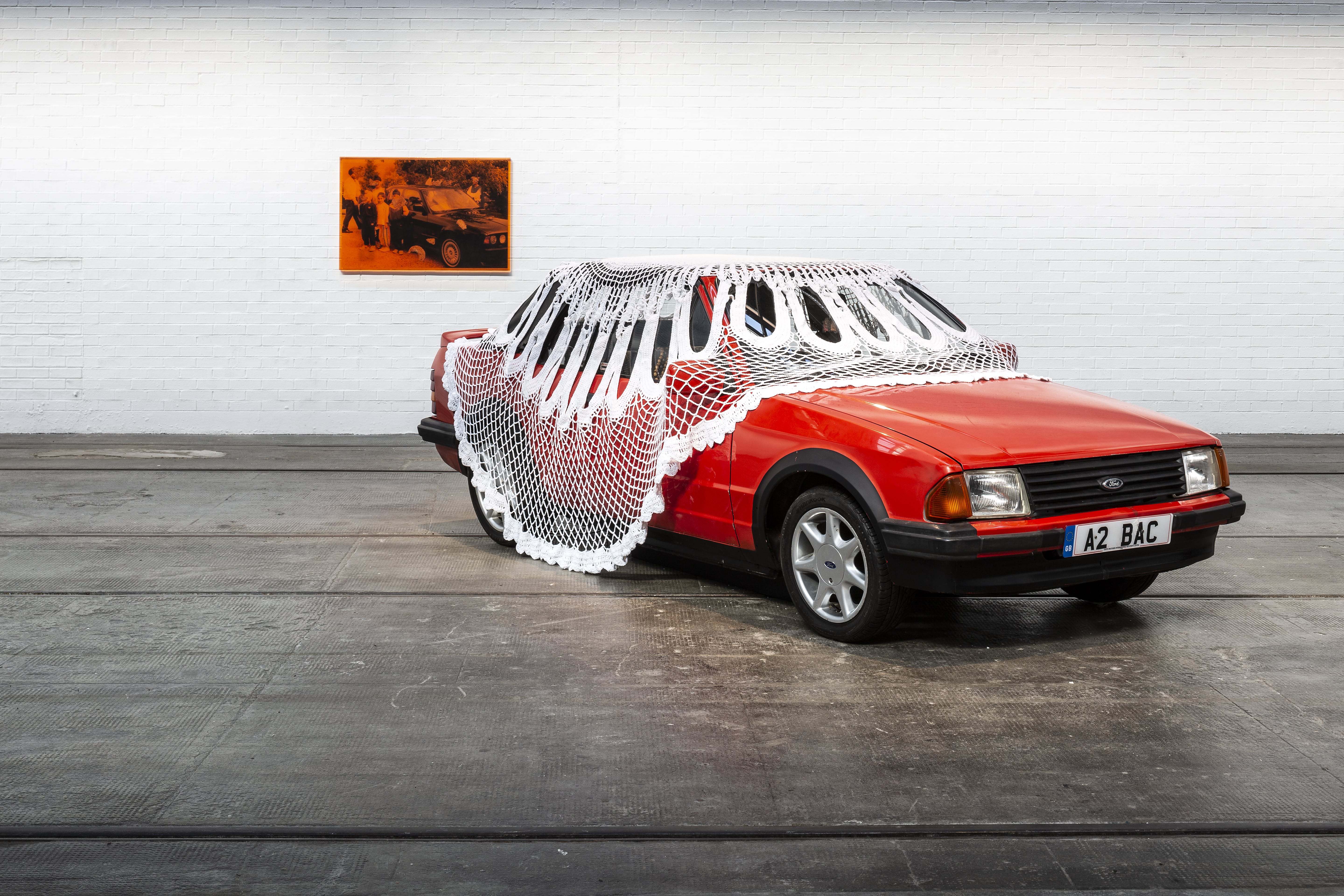 Jasleen Kaur wins the Turner Prize 2024
Jasleen Kaur wins the Turner Prize 2024Jasleen Kaur has won the Turner Prize 2024, recognised for her work which reflects upon everyday objects
By Hannah Silver
-
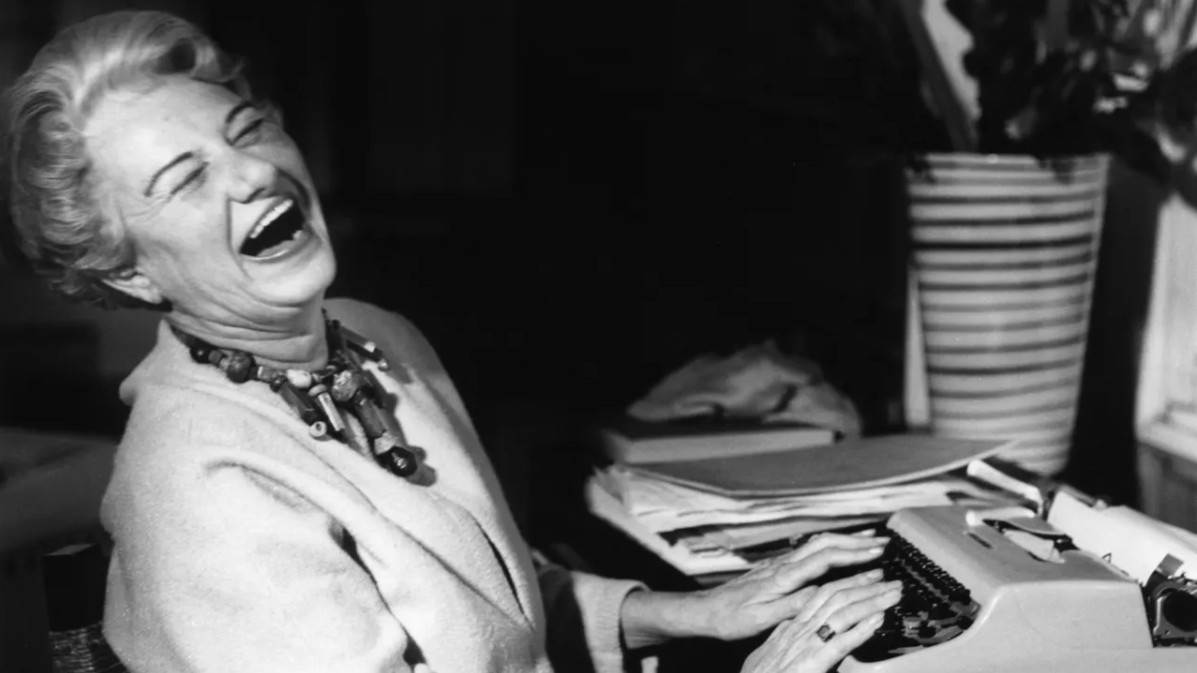 Peggy Guggenheim: ‘My motto was “Buy a picture a day” and I lived up to it’
Peggy Guggenheim: ‘My motto was “Buy a picture a day” and I lived up to it’Five years spent at her Sussex country retreat inspired Peggy Guggenheim to reframe her future, kickstarting one of the most thrilling modern-art collections in history
By Caragh McKay